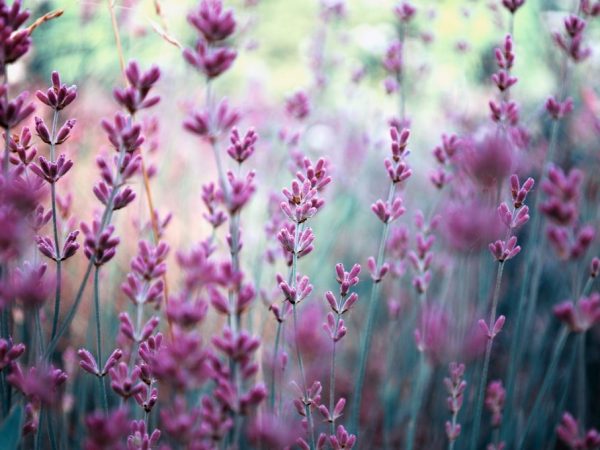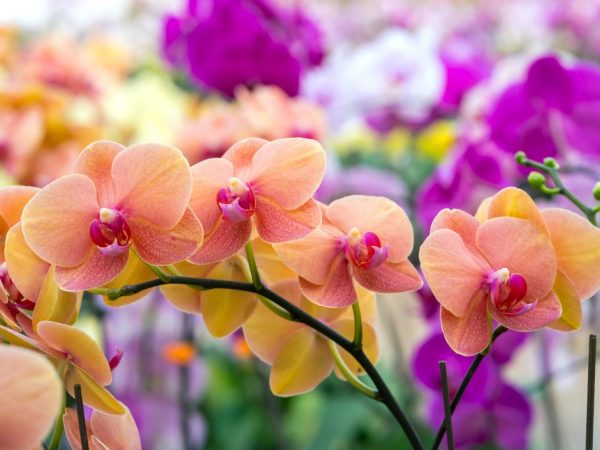Features of the growth of orchids in nature
Orchids have become popular houseplants that adorn the home with their exotic flowers. These are wild flowers that commonly grow in rainforests, shrouds, and even rocks. Orchids in nature lead a different way of life and differ from domestic species in their characteristics.

Features of the growth of orchids in nature
Orchids in nature
This exotic flower belongs to epiphytic plants, that is, it does not need land for life. Most often, an orchid grows in nature on the bark of trees, clinging to it with its massive aerial roots.
Wild Phalaenopsis is not a parasite that feeds on other plants. It receives all the necessary nutrients only from the atmosphere, since its root system is mostly located on the surface, and photosynthetic roots are able to absorb moisture directly from the air. Sometimes these flowers grow on rocks or clumps of dry grass.
The most suitable place for the life of wild phalaenopsis are tropical forests, since there are all the conditions necessary for normal growth and long flowering: high humidity levels, good air circulation and reliable protection from direct scorching sunlight. Such a humid and warm climate promotes the longevity of wild flowers.
Orchid distribution areas
Where this exotic plant comes from has not been precisely identified. Some sources claim that orchids first appeared in China and Japan, others say that an unusual flower was found in the tropics of South America, and still others consider it to be the homeland of Southeast Asia. From the beginning of the 18th century, phalaenopsis spread rapidly throughout Europe. Natural wild species of orchids were able to adapt to different climatic conditions and today grow well in all European countries and throughout Russia.
Since phalaenopsis grows in nature almost everywhere, scientists conditionally divided the territories of their growth in accordance with climatic zones:
- The first zone includes Central and South America, Australia, Southeast Asia, coastal parts of Africa and some countries located near the equator. In these areas, there is always a warm and humid climate, and these are suitable conditions for the growth and flowering of orchids in nature.
- The second zone includes rocky areas and mountain forests, that is, the mountains of Indonesia, Malaysia, New Guinea, Brazil and the Andes. These mountains are very high, so there is always fog in the mountain forests located on the slopes, even on hot days. The climate here is not as hot as in the tropics, but the air humidity is still high, so almost all orchid species grow here, mainly as epiphytes.
- The third zone includes the steppes and plateaus of Brazil. Here, the living conditions for orchids are not quite suitable compared to the tropics or the equator.In this climatic zone, there are mainly terrestrial species and a small part of epiphytes that grow near water bodies.
- In the fourth zone, scientists included some territories of North America, Europe and Asia. The climate here is temperate, so in these countries there are only terrestrial species and in small numbers.
Depending on in which part of the globe the phalaenopsis grows, its characteristics will change. In hot countries, natural conditions are more suitable for a flower, so the period of its flowering will be longer, as well as its life. And in cool climates, for example, in the north of Russia, the forest orchid will lead a less active lifestyle, have different characteristics of the root system, leaves and other needs.
Varieties of orchids in nature

Orchids are very diverse
There are many different types and varieties of orchids - more than 30 thousand, not counting the hybrid species. Orchids are constantly pollinated in natural conditions with the help of other flowers, this leads to their modifications. Flowers multiply rapidly, so every year their number in wildlife is increasing. These plants, depending on the living conditions, differ in appearance (size, shape and color of flowers, length of stems and leaves, roots, etc.) and life expectancy.
One of the most common species is the phalaenopsis orchid, which also has its own subspecies and varieties. Phalaenopsis flowers are distinguished by petals, similar to the wings of butterflies. Their colors are mostly variegated, which is typical for almost all species of this plant. The color scheme is very diverse - most often in nature there are Phalaenopsis orchids of red, pink, purple, white, blue and their different shades, there are even black flowers. But sometimes it is possible to find phalaenopsis of an unusual color - with lines, leopard spots or specks of other colors.
Classification of wild orchids
Depending on the way of life of orchids in natural conditions, they are classified into 3 groups:
- saprophytes;
- epiphytes;
- terrestrial species.
Saprophytes
Saprophytic orchids differ in that they do not have chlorophyll. This species grows underground.
Saprophytic Phalaenopsis include many species. Their main feature is that they do not have green leaves, like all flowers we are used to. They have one shoot, which is covered with scales and at the end of which flowers are formed. The plants of this group have a powerful developed root system, similar to a coral. Individual roots do not emanate from the main rhizome, it nourishes the plant by absorbing moisture and microelements necessary for life from humus with its entire surface.
Epiphytes
Most of the existing orchid species belong to the group of epiphytic plants. They grow in tropical forests on trees, on rocks, and for normal life they need high humidity and air temperature. Their main difference is the ability to exist without soil, since their aerial roots and long creeping stems absorb sunlight and moisture from the environment (from dew, fog, rain).
Epiphytic plants have thin stems that are unable to stand upright on their own. Therefore, they mainly use trees as a support. All absorbed nutrients accumulate in the fleshy leaves of flowers and their root tubers.
Only epiphytes are grown at home, and due to their characteristics and habitat, they require special care. Home care includes periodically moisturizing the plant and maintaining air humidity.
Terrestrial species
Terrestrial species grow on soil. These types of orchids are most familiar to us, as they have the usual green leaves and roots growing in the ground. Their habitat is Europe and North America.In these territories, orchids grow up to a maximum of 0.5 m, and in tropical zones - up to 1 m and more, creating a bush with several peduncles.
Terrestrial species are accustomed to changing seasons, because of this, their vital activity is divided into several periods - a period of active growth, flowering, reproduction and rest. In the summer season, they form new storage lateral roots called root cones. Throughout the winter, they wait underground, and in the spring new stems grow from them.
Features of the growth of orchids in nature

Self-propagation of flowers in nature
In the wild, Phalaenopsis grow and reproduce on their own. These flowers also have elongated leaves, collected in a rosette, and one or more peduncles. Buds are formed on the peduncles, from which beautiful bright flowers appear over time. Their number varies depending on the species.
These plants feed on the roots, which are very powerful and have several thickenings, called false tubers, where all the nutrients are accumulated. Thanks to this feature of the root system, flowers are able to survive drought. Also, the accumulation of nutrients in the roots contributes to longer flowering.
Reproduction in nature
In the wild, Phalaenopsis reproduce using seeds. Beautiful bright flowers with a pleasant aroma attract various insects that are pollinators. After pollination, after a short period of time, elongated seed pods are formed on the peduncles. After the seed drops from the mother plant, it begins to germinate on its own. At the first stage, leaves appear, and then the shoot and all other parts.
The seed does not always immediately begin an independent life after separation from the box. Its germination can begin in a few years. Phalaenopsis are also capable of producing offspring on their peduncles or even on the roots.
Flowering in nature
Most wild orchid species have the same life periods as indoor hybrid plants. They have periods of growth, flowering and dormancy. In wildlife, the flowering period of phalaenopsis is much longer, and their flowers are larger and more saturated in color. This is due to the fact that in the natural environment, flowers regularly receive all the nutrients necessary for life and in the right amount.
Phalaenopsis bloom especially long and beautifully in the tropical zone, since there are the most suitable conditions for this - a lot of moisture and sunlight. The duration and frequency of flowering differ depending on the species and growing conditions. On average, phalaenopsis blooms 2-3 times a year, and the flowering duration varies from 3 to 4 months.
Conclusion
Orchids can be found all over the world. They grow on almost all continents where conditions are suitable for them - high levels of humidity and high air temperatures. There are many varieties of these flowers, which have their own characteristics and differ mainly in appearance and way of existence.


